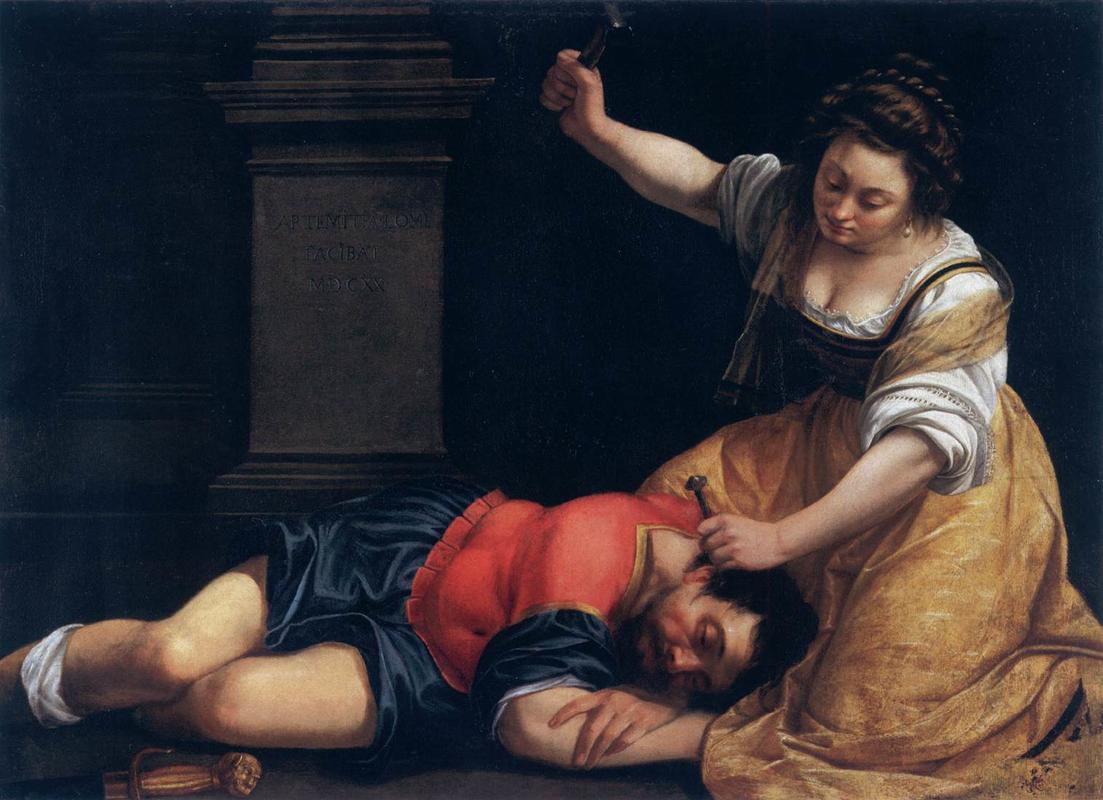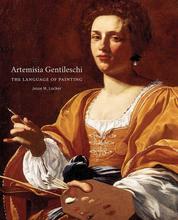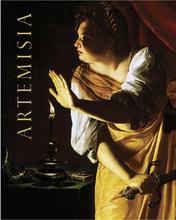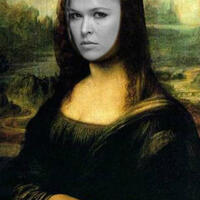More about Jael and Sisera
- All
- Info
- Shop

Sr. Contributor
Jael and Sisera is one Bible story you probably won’t see in a Veggie Tales cartoon.
In the Book of Judges, as the Canaanites menace the Israelites, the female prophet and military leader Deborah predicts that a woman will destroy the evil Canaanite warlord Sisera. The Israelite armies under Deborah’s command push Sisera into retreat. As he flees, Jael invites him into her husband’s tent to take refreshment and sleep. She then nails his head into the ground with a tent spike. According to other accounts, Sisera is a monstrous giant, whereas Jael variously lulls him into submission with her beauty and charm, jams the spike through his head while he is apparently awake and standing up, or has sex with him until he’s too exhausted fight back and then drives the spike through his head...now that’s what I call nailing a guy’s brains out!
Convention assumes this is one of Artemisia’s iconic revenge paintings, depicting her slaying her rapist Agostino Tassi. However, Sisera bears a marked resemblance to Caravaggio, her artistic idol. Artemisia painted this as she was coming into her own as an artist, so perhaps this symbolizes her rejection of her former hero. Some historians also believe Jael may resemble a Medici princess. Nobody knows who commissioned this, but a likely candidate is Maria Maddelena, wife a Cosimo de’ Medici, Grand Prince of Tuscany. Some believe Jael is meant to depict the famously virtuous Maria, perhaps explaining her relatively serene, Madonna-like pose.
Artemisia’s Jael may also draw inspiration from the murderess Beatrice Cenci. Beatrice was a beautiful young noblewoman who was repeatedly raped and beaten by her own father. When the authorities dismissed her claims, she resorted to vigilante justice. 400 years before Law and Order SVU, a girl had to take things into her own hands. Beatrice bludgeoned her father to death with a hammer and dumped his body off the balcony of their castle, with the help of her stepmother and brothers. Despite a public outcry of mercy for Beatrice, the Pope sentenced her and her family to death. The Pope then confiscated their rich Cenci estates. A mere coincidence, of course! Artemisia was no stranger to how cruel the legal system could be, having been tortured at the trial of her own rapist. This may be her way of giving Beatrice justice.
Rediscovered in terrible condition in the 1970s, the painting was a critical flop, called, “Passionless, stilted, and derivative.” It is more passive than Artemisia’s popular Judith paintings, but this may actually be the point. Jael was traditionally depicted as a psychotic femme fatale, who disobeys her husband and commits adultery, using sex to murder a defenseless man. Artemisia seems to set the record straight. Her Jael is a stone-cold assassin in comparatively modest dress, doing her duty with a clear conscience and a competent hand. No “feminine” irrationality, no misplaced rage, and no mess. Jael’s revenge is a dish best served cold, with just a hint of cleavage.
Featured Content
Here is what Wikipedia says about Jael and Sisera (Artemisia Gentileschi)
Jael and Sisera is a painting by the Italian Baroque artist Artemisia Gentileschi, executed around 1620.
Check out the full Wikipedia article about Jael and Sisera (Artemisia Gentileschi)


















Ah, the old spike through the head trick. Artemisia Gentileschi might have been a tad obsessed with the ‘women inflicting physical harm on men’ theme, but she understood composition and color, and was an amazingly talented painter whose works should be in every art history book.